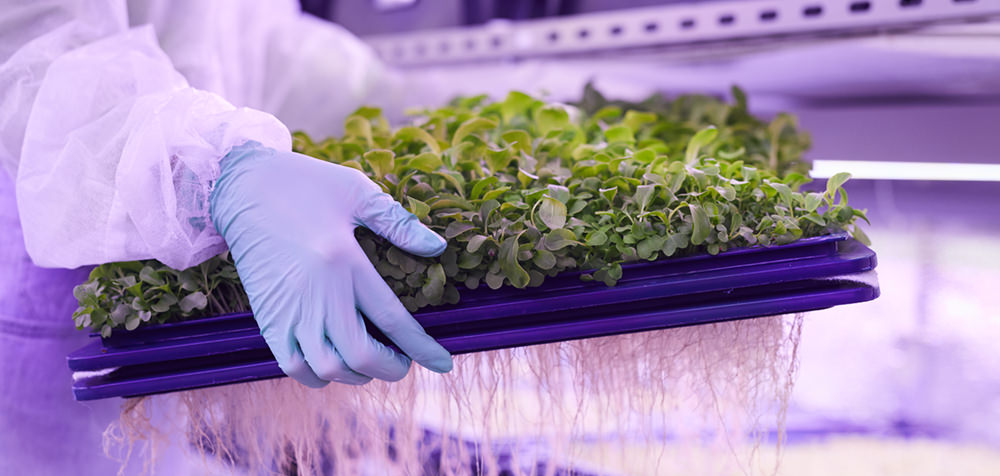Efficiency vs Efficacy in Horticulture Lighting: What's the Difference
As the demand for locally grown, sustainable horticulture production continues to rise. Horticulture lighting such as LED grow lights has become an increasingly important technology for indoor farming, greenhouse, and vertical farms. It provides the energy and signals that plants need to perform photosynthesis, regulate their morphology, and optimize their quality and yield. However, when it comes to evaluating the effectiveness of horticulture lighting, it is important to know the difference between efficiency and efficacy. Whiles they are often used interchangeably, they represent distinct aspects of lighting performance.
In this blog, we will explore the difference between efficiency and efficacy in horticulture lighting. You will have a better understanding of plant lighting based on efficiency and efficacy. Let’s get started.
What is efficiency in horticulture lighting
In the content of horticulture lighting, efficiency refers to the amount of energy that is converted into light for plant growth. It is a measure of how much light output power a lighting system produces per unit of electric input power. It is an important consideration for growers who want to minimize their energy costs and reduces their environmental impact and light pollution.
There are several metrics used to measure efficiency in horticulture lighting. One of the most commonly used metric is electric efficiency, which measures the amount of electrical power consumed by the lighting system per unit of light output. The higher the efficiency, the less electrical energy is wasted as heat or other forms of radiation. The more efficient a lighting system is, the less electricity is consumed and the lower the greenhouse gas emissions it generates.

What is efficacy in horticulture lighting
Efficacy in horticulture lighting is a measure of the amount of photosynthetically active radiation (PAR) emitted by the lighting system per watt of electrical power input. It is expresses as a ratio of per micromoles per joule (μmol/J). The higher the efficacy, the more photosynthetic photons are available for plants.
Efficacy is an important metric for horticulture lighting because it affects the plant growth and development. The more efficacious a lighting system is, the more light energy is delivers to plants and more photosynthesis they can perform. The type of lighting technology used can also affect efficacy. For example, LED lighting system are often more effective than traditional HPS lights at promoting plant growth and development.

Difference between efficiency and efficacy
While efficiency and efficacy are often used interchangeable, they represent distinct aspects of lighting performance that can have significant impact on plant growth and yields. Here are of their main differences:
- Efficiency measures how well a lighting system converts electrical energy into light energy, while efficacy measure how well a lighting system converts electrical energy into photosynthetic photons.
- Efficiency is measured as the ratio of light output power to electrical input power (W/W). It tells us how much electrical energy is wasted as heat or other forms of radiation by a lighting system. Efficacy is measured as the ratio of photosynthetic photon output to electrical input power (μmol/J). It tells us how many photosynthetic photons are available for plants per unit of electrical energy consumed by a lighting system.
- The higher the efficiency, the lower the operational cost and environmental impact of a lighting system. They higher the efficacy, the more light energy is delivered to plants and more photosynthesis they can perform.

Efficiency or efficacy, which is more important
For growers, one of the challenges is to find the optimal balance between efficiency and efficacy. Efficiency and efficacy are not independent metrics, but they are related by the physics of light protection and plant response. It is important to note that a lighting system may be efficient but not effective, or vice versa. For example, a lighting system may be highly efficient at converting energy into light, but if that light is not well-suited to the specific needs of the plants being grown, it may not be effective at promoting plant growth and development. Similarly, a lighting system may be high effective at promoting plant growth and development, but if it is not efficient at converting energy into light, it may not be cost-effective for growers to use.
Understanding the difference between efficiency and efficacy is crucial for growers who want to optimize their horticulture lighting systems for both energy efficiency and plant growth. By choosing a lighting system that is optimized for both efficiency and efficacy, growers can achieve better yields and higher-quality produce while minimizing their energy costs and environmental impact and energy costs.
Don’t wait to take action, contact us to start optimizing your plant lighting system for maximum efficiency and efficacy.

